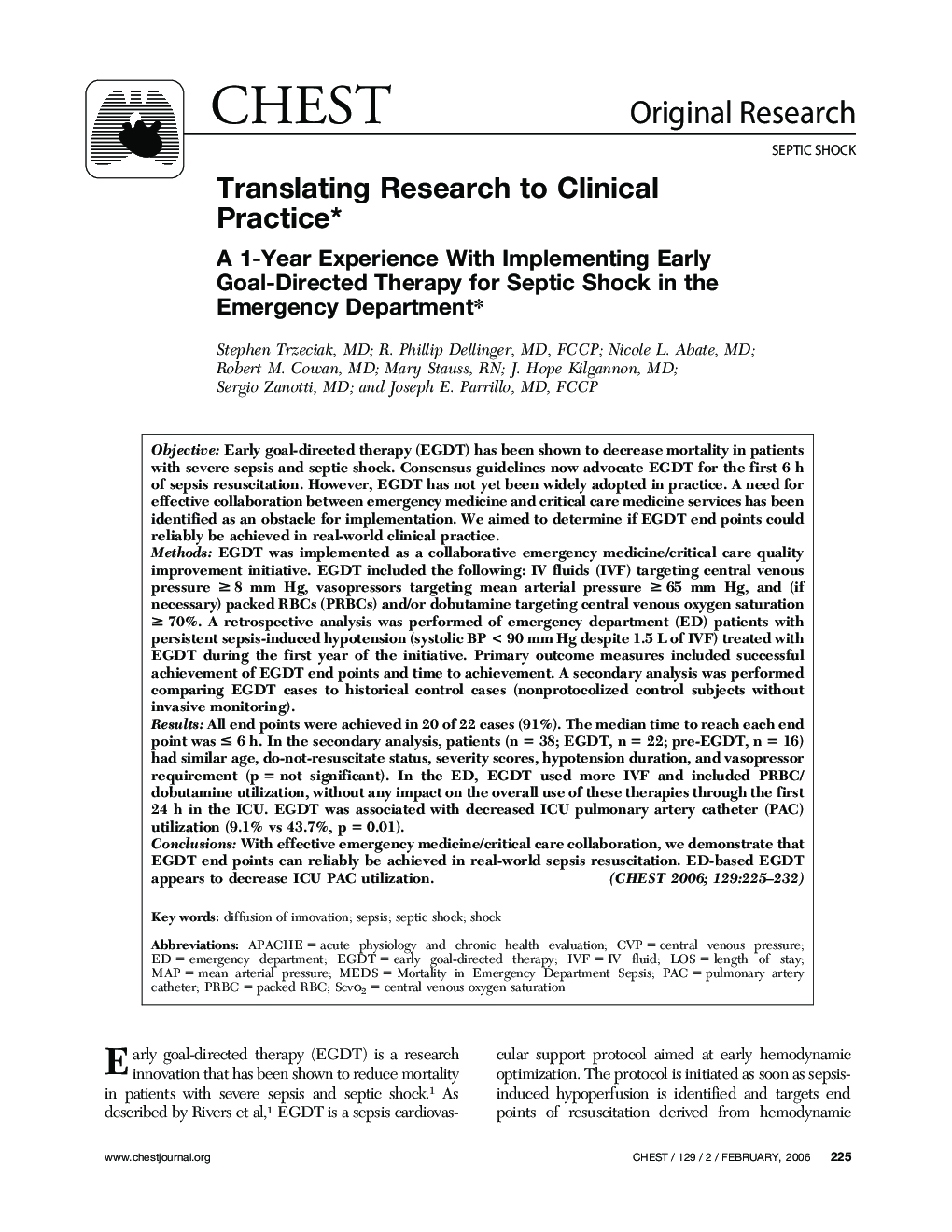| Article ID | Journal | Published Year | Pages | File Type |
|---|---|---|---|---|
| 2906140 | Chest | 2006 | 8 Pages |
ObjectiveEarly goal-directed therapy (EGDT) has been shown to decrease mortality in patients with severe sepsis and septic shock. Consensus guidelines now advocate EGDT for the first 6 h of sepsis resuscitation. However, EGDT has not yet been widely adopted in practice. A need for effective collaboration between emergency medicine and critical care medicine services has been identified as an obstacle for implementation. We aimed to determine if EGDT end points could reliably be achieved in real-world clinical practice.MethodsEGDT was implemented as a collaborative emergency medicine/critical care quality improvement initiative. EGDT included the following: IV fluids (IVF) targeting central venous pressure ≥ 8 mm Hg, vasopressors targeting mean arterial pressure ≥ 65 mm Hg, and (if necessary) packed RBCs (PRBCs) and/or dobutamine targeting central venous oxygen saturation ≥ 70%. A retrospective analysis was performed of emergency department (ED) patients with persistent sepsis-induced hypotension (systolic BP < 90 mm Hg despite 1.5 L of IVF) treated with EGDT during the first year of the initiative. Primary outcome measures included successful achievement of EGDT end points and time to achievement. A secondary analysis was performed comparing EGDT cases to historical control cases (nonprotocolized control subjects without invasive monitoring).ResultsAll end points were achieved in 20 of 22 cases (91%). The median time to reach each end point was ≤ 6 h. In the secondary analysis, patients (n = 38; EGDT, n = 22; pre-EGDT, n = 16) had similar age, do-not-resuscitate status, severity scores, hypotension duration, and vasopressor requirement (p = not significant). In the ED, EGDT used more IVF and included PRBC/dobutamine utilization, without any impact on the overall use of these therapies through the first 24 h in the ICU. EGDT was associated with decreased ICU pulmonary artery catheter (PAC) utilization (9.1% vs 43.7%, p = 0.01).ConclusionsWith effective emergency medicine/critical care collaboration, we demonstrate that EGDT end points can reliably be achieved in real-world sepsis resuscitation. ED-based EGDT appears to decrease ICU PAC utilization.
